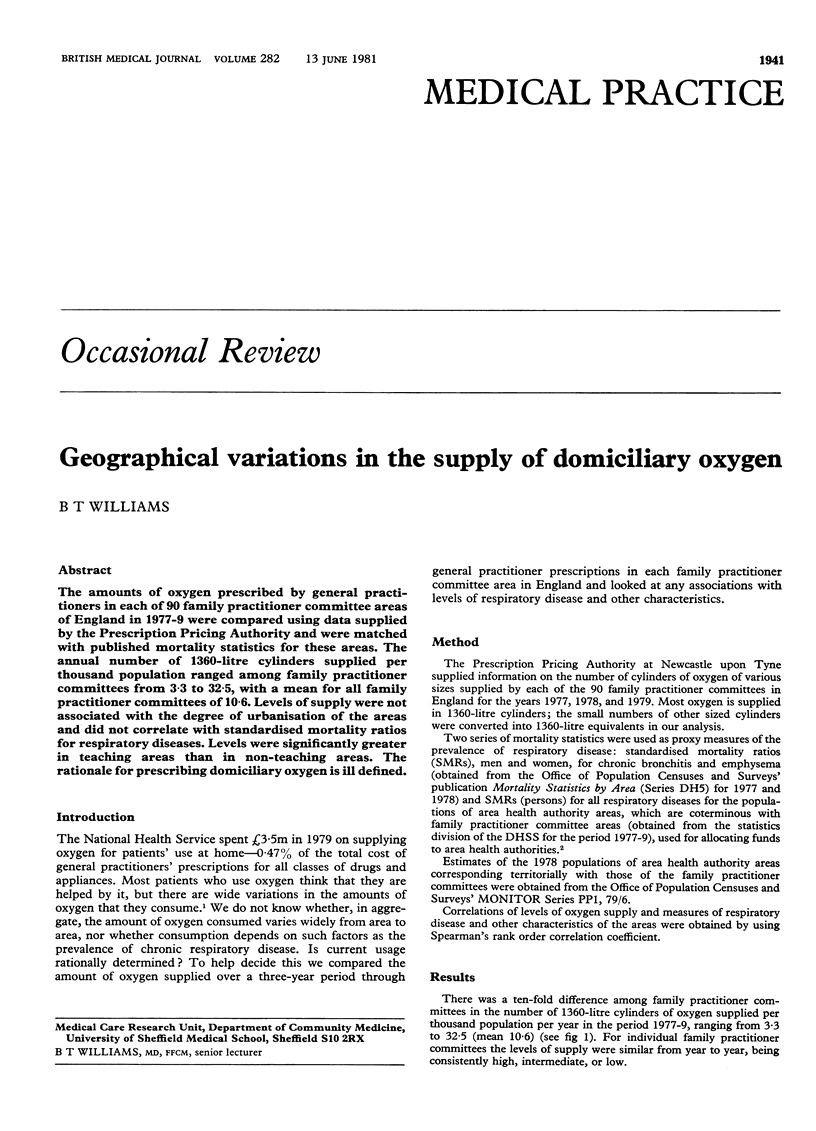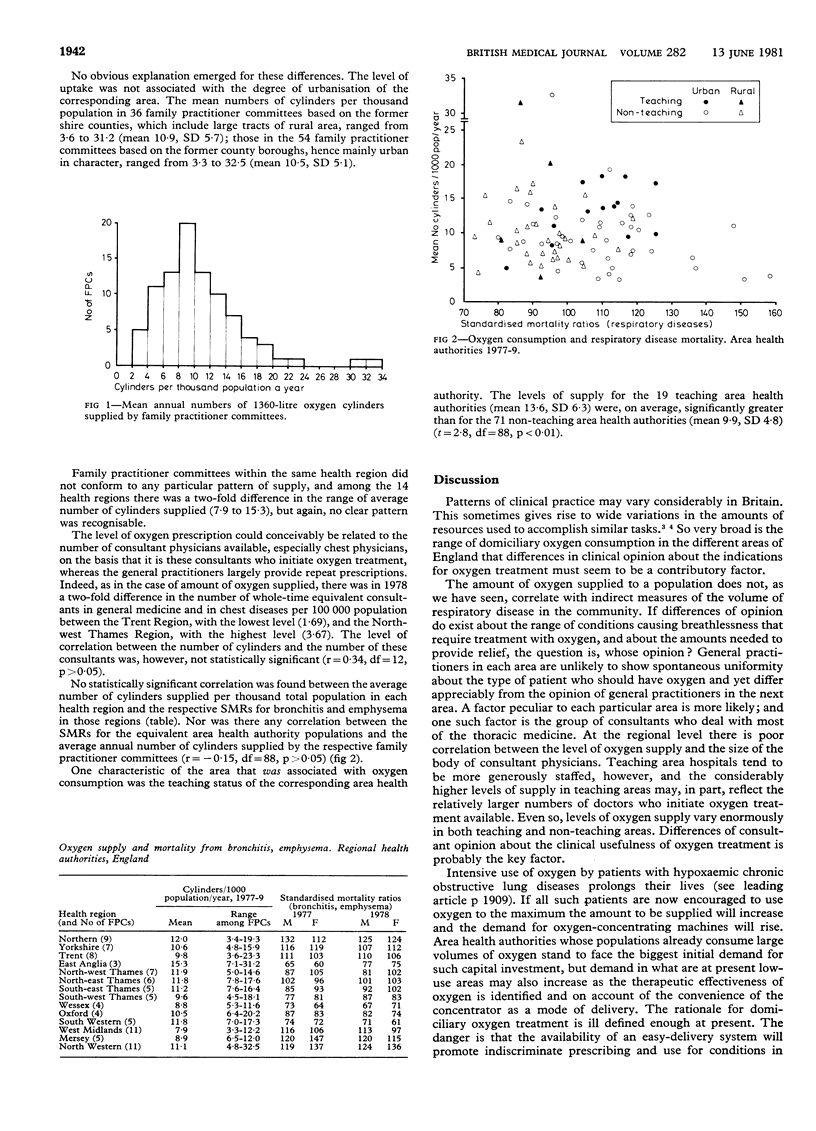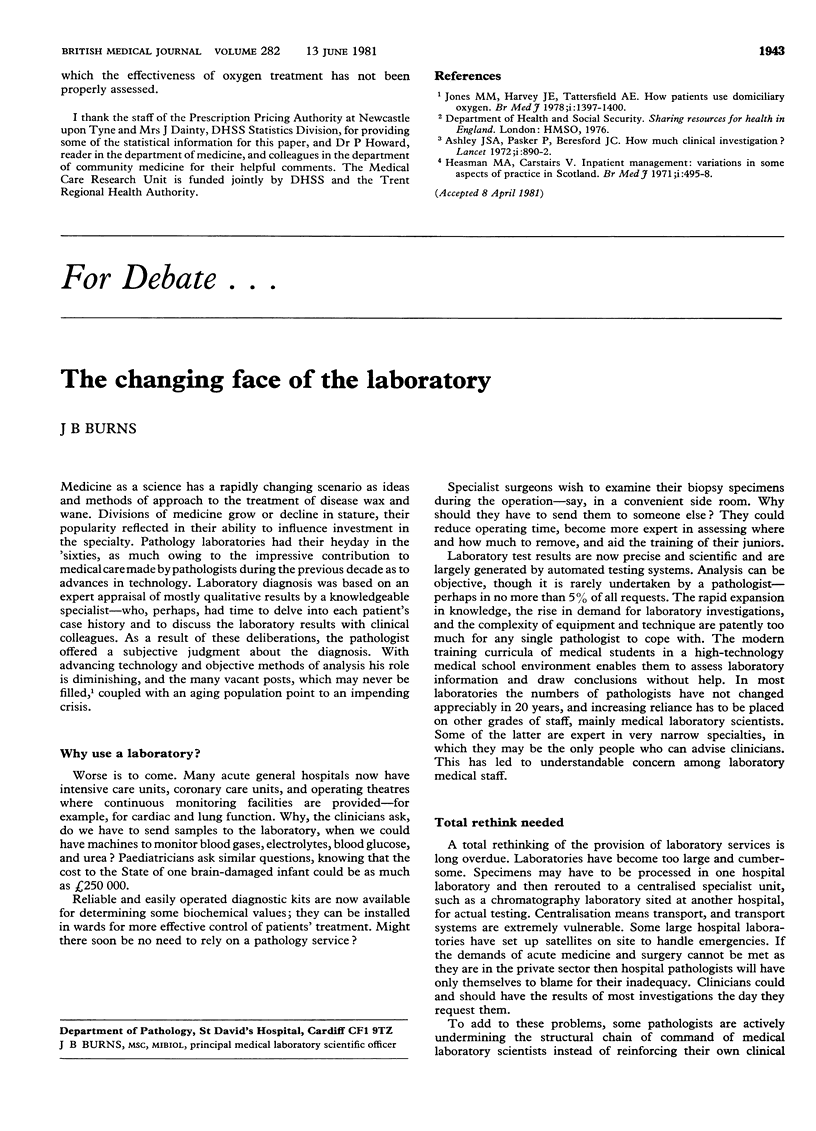Abstract
The amounts of oxygen prescribed by general practitioners in each of 90 family practitioner committee areas of England in 1977-9 were compared using data supplied by the Prescription Pricing Authority and were matched with published mortality statistics for these areas. The annual number of 1360-litre cylinders supplied per thousand population ranged among family practitioner committees from 3.3 to 32.5, with a mean for all family practitioner committees of 10.6. Levels of supply were not associated with the degree of urbanisation of the areas and did not correlate with standardised mortality ratios for respiratory diseases. Levels were significantly greater in teaching areas than in non-teaching areas. The rationale for prescribing domiciliary oxygen is ill defined.
Full text
PDF


Selected References
These references are in PubMed. This may not be the complete list of references from this article.
- Ashley J. S., Pasker P., Beresford J. C. How much clinical investigation? Lancet. 1972 Apr 22;1(7756):890–892. doi: 10.1016/s0140-6736(72)90752-0. [DOI] [PubMed] [Google Scholar]
- Heasman M. A., Carstairs V. Inpatient management: variations in some aspects of practice in Scotland. Br Med J. 1971 Feb 27;1(5747):495–498. doi: 10.1136/bmj.1.5747.495. [DOI] [PMC free article] [PubMed] [Google Scholar]
- Jones M. M., Harvey J. E., Tattersfield A. E. How patients use domiciliary oxygen. Br Med J. 1978 May 27;1(6124):1397–1400. doi: 10.1136/bmj.1.6124.1397. [DOI] [PMC free article] [PubMed] [Google Scholar]


